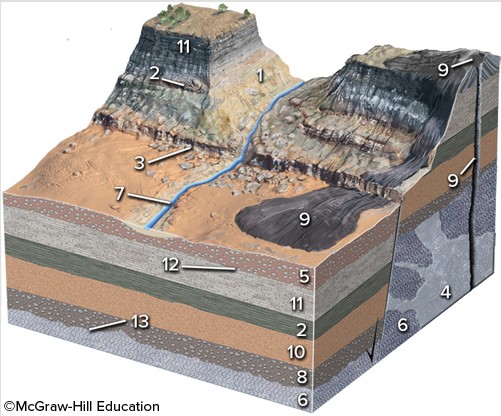What are green buildings?
A) buildings covered in vines and plant life that enable energy-efficient cooling and heating as well as providing food
B) buildings painted green to help reflect sunlight
C) inexpensively constructed buildings that help save taxpayers a lot of money
D) buildings constructed out of sustainable materials, which limit the use of energy and water, minimize health impacts, control pollution, and recycle waste
Answer: D) buildings constructed out of sustainable materials, which limit the use of energy and water, minimize health impacts, control pollution, and recycle waste
You might also like to view...
Friction is at play in
A. meteors. B. earthquakes. C. many sports. D. all of the above
The Sahara desert receives little precipitation because [INSERT FIGURE 8-7a. NO CAPTION]
A) it is very close to the intertropical convergence zone B) it is near the equator C) it is usually under the influence of a semipermanent low pressure cell D) it is usually under the influence of a semipermanent high pressure cell
Modern geochronology studies recognize that most radiometric dates record a time when a mineral cools below a temperature where the mineral closes to gain or loss of parent and daughter isotopes
This "closure temperature" varies between different minerals and different isotopic systems. This has allowed the absolute dating of sedimentary rocks through dating of single crystals. For example, if a rock is heated above the closure temperature of the rocks constituent minerals, the date of that mineral provides a minimum age. In contrast, if the rock contains a mineral with a closure temperature higher than the maximum temperature reached by the rock, that mineral will retain the age from its source. The mineral zircon dated by U-Pb methods is an example. So, you look at a rock that has Cretaceous fossils in it, but your paleontologist friend looks at them and cannot determine if they are Early or Late Cretaceous in age. The rock contains the mineral apatite, which accumulates He through the decay or U and Th, but closes to He loss at temperature of around 75°C. You know from the stratigraphic section that the rocks were originally buried at least 3km. The local geothermal gradient is about 35°C/km. You obtain an apatite He date of 105 +/- 2 million years. You also date 100 grains of zircon from the rock. The zircons yield dates that range in age from 2.1 billion years to 125 million years. Three different zircon grains yield ages between 125 and 127 million years. You google "cretaceous time scale" and learn that the Cretaceous begins at about 144 million years and ends at about 65 million years ago. The Early Cretaceous ends about 100 million years ago. How old are these sedimentary rocks?
Which of the numbered units is the oldest?
A. unit 8 B. unit 10 C. unit 6 D. unit 4 E. unit 9